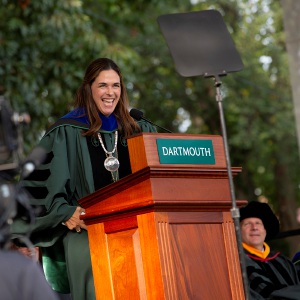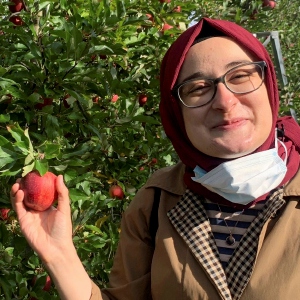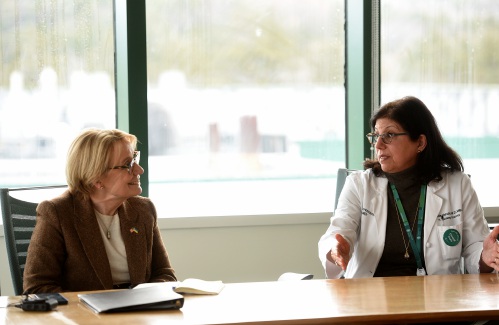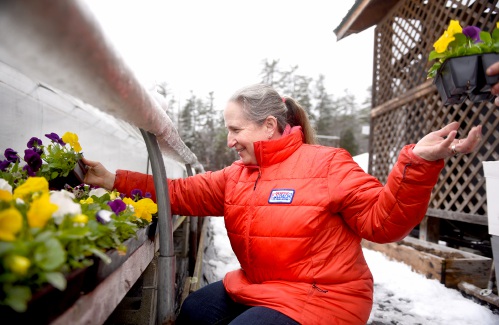
Outgoing Alice Peck Day CEO led hospital through growth and change
LEBANON — Since opening its doors in 1932, Alice Peck Day Memorial Hospital has been “Lebanon’s community hospital,” as outgoing CEO Sue Mooney described it.

A Life: Larry Flint ‘just chose to focus on the positive’
NEWPORT — When Larry Flint received a liver transplant in 1991, he was told he could expect to live another seven to nine years.
Most Read
 ‘A bit Kafkaesque’: Federal judge spars with government lawyer over status of Dartmouth international student
‘A bit Kafkaesque’: Federal judge spars with government lawyer over status of Dartmouth international student
 Woodstock demotes police chief to patrol officer
Woodstock demotes police chief to patrol officer
 Proposed dog ordinance sparks controversy in Norwich
Proposed dog ordinance sparks controversy in Norwich
 Hundreds of alumni sign letter urging Beilock, Dartmouth to make a stand for academic freedom
Hundreds of alumni sign letter urging Beilock, Dartmouth to make a stand for academic freedom
 Kenyon: A year later, effects of mass arrests at Dartmouth linger
Kenyon: A year later, effects of mass arrests at Dartmouth linger
Editors Picks
 Kenyon: A year later, effects of mass arrests at Dartmouth linger
Kenyon: A year later, effects of mass arrests at Dartmouth linger
 Proposed dog ordinance sparks controversy in Norwich
Proposed dog ordinance sparks controversy in Norwich
 Editorial: Vermont judge defends free speech
Editorial: Vermont judge defends free speech
 Over Easy: To dumb and beyond
Over Easy: To dumb and beyond
Sports

High school baseball: Windsor rebuilds while Thetford shines
WINDSOR — Tough times for the Windsor High baseball team. Fresh promise for Thetford Academy.
 Local Roundup: Mascoma baseball narrowly loses to Fall Mountain
Local Roundup: Mascoma baseball narrowly loses to Fall Mountain
 Local Roundup: Lebanon hosts four-team track and field meet
Local Roundup: Lebanon hosts four-team track and field meet
Opinion

Editorial: Free speech detentions reach into Upper Valley
So now the war comes home, as wars always do. This time it’s the dirty war that the American government is waging against immigrants, international students and the rule of law. And home is the heart of the Upper Valley.
 Editorial: New Hampshire budget shortfall is a crisis of Republican design
Editorial: New Hampshire budget shortfall is a crisis of Republican design
 Editorial: Time is running out for American democracy
Editorial: Time is running out for American democracy
 Editorial: Jeanne Shaheen blazed a trail in politics
Editorial: Jeanne Shaheen blazed a trail in politics
 Column: Federal funding for medical research puts America first
Column: Federal funding for medical research puts America first

Your Daily Puzzles

An approachable redesign to a classic. Explore our "hints."

A quick daily flip. Finally, someone cracked the code on digital jigsaw puzzles.

Chess but with chaos: Every day is a unique, wacky board.

Word search but as a strategy game. Clearing the board feels really good.

Align the letters in just the right way to spell a word. And then more words.
Photos

A little off the top
Joel Luis and Danny Sanchez of Olsen Roofing remove shingles on a large barn last week in Orford. Built in the 1800s, the barn is getting a new roof to help preserve the building.
 Winding up a project
Winding up a project
 Capping a class trip
Capping a class trip
 Spring into action
Spring into action
 Spring cleanup
Spring cleanup
Arts & Life

Art Notes: Two Upper Valley events to feature video game soundtracks
Video game soundtracks, by their nature, exist in the background. Their job is to give texture to the action and to lull players into the world of the game, without posing a distraction.
 Sandra Oh to speak at Dartmouth graduation
Sandra Oh to speak at Dartmouth graduation
 Roman Catholics mourn Pope Francis
Roman Catholics mourn Pope Francis
 A timeline of events in the rebuilding of Lebanon’s Baptist church
A timeline of events in the rebuilding of Lebanon’s Baptist church
 A Life: Kelly Kangas ‘just always had that spirit’
A Life: Kelly Kangas ‘just always had that spirit’
Obituaries
 Weldon Murphy
Weldon Murphy
Weldon 'Red' Murphy Hartland, VT - Weldon 'Red' Murphy, age 86, passed Saturday, February 1, 2025. A graveside service will be held in the Hartland Village Cemetery at 10 am on Saturday, May 3, 2025. Knight Funeral Home has been entrust... remainder of obit for Weldon Murphy
 Wayne R. Chalmers
Wayne R. Chalmers
Lake Havasu City, AZ - Long time resident of Bradford, VT and Lake Havasu City, AZ, Wayne R. Chalmers, passed away Jan. 16, 2025 at home surrounded by family. Wayne was born Mar. 11, 1931 to Robert M. and Doris (Thompson) Chalmers. ... remainder of obit for Wayne R. Chalmers
 Stuart Thompson Close
Stuart Thompson Close
Norwich, VT - Stuart Thompson Close, 65, died Thursday, April 17, 2025, at Dartmouth Hitchcock Medical Center following a twelve-year battle with a brain tumor. Born January 30, 1960, in Hanover, NH, Stuart, better known as Stu or S... remainder of obit for Stuart Thompson Close
 Leonard Veilleux
Leonard Veilleux
Claremont, NH - Leonard E. Veilleux, age 74, passed Wednesday, December 4, 2024. A Mass of Christian Burial will be held Friday, May 2nd at St. Mary Church at 11AM with burial to follow in St. Mary Cemetery ... remainder of obit for Leonard Veilleux


 Business and nonprofit news: Health Care and Rehabilitation Services starts new intensive outpatient program for people with substance use disorders
Business and nonprofit news: Health Care and Rehabilitation Services starts new intensive outpatient program for people with substance use disorders
 Amphibians’ migration routines are getting more difficult. These brigades are trying to help.
Amphibians’ migration routines are getting more difficult. These brigades are trying to help.
 More research time or information overload? Lawmakers weigh moving state primary elections 3 months earlier
More research time or information overload? Lawmakers weigh moving state primary elections 3 months earlier
 Out & About: Fairlee church to host walk for peace on World Labyrinth Day
Out & About: Fairlee church to host walk for peace on World Labyrinth Day
 Tariffs could add to New Hampshire’s housing woes
Tariffs could add to New Hampshire’s housing woes
 Under new ownership, WDEV seeks a second wind
Under new ownership, WDEV seeks a second wind
 ‘New Hampshire is just going to embarrass itself’: Former Child Advocate warns against proposed office cuts
‘New Hampshire is just going to embarrass itself’: Former Child Advocate warns against proposed office cuts
 A Solitary Walker: Sharing from the big tree of life
A Solitary Walker: Sharing from the big tree of life

 Cross Vermont Trail expands into nearby communities with connector to Lamoille Valley Rail Trail
Cross Vermont Trail expands into nearby communities with connector to Lamoille Valley Rail Trail As spring skiing season winds down, one NH ski area plans to spin its lift until May
As spring skiing season winds down, one NH ski area plans to spin its lift until May
